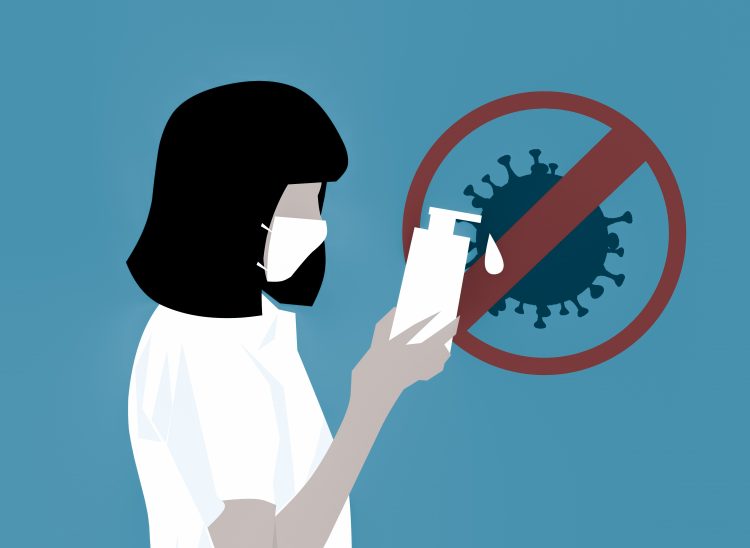What is BF.7, the sub-variant that has the world by its grip?
Pravin Bhatta / January 16, 2023
China’s recent admission that it has witnessed the deaths of almost 60,000 people in the five weeks after it abandoned its Zero Covid policy between December 8, 2022, and January 12, 2023, has left the global community scrambling for new measures to stop the entry of the coronavirus into their borders. Governments worldwide are gearing up for restrictions to curb a possible new wave after China scrapped its “Zero Covid” policy. A variant named BF.7 is reported to be the main driver of the current surge in China. In this context, South Asia Check explains what this variant is and how dangerous it is.

What is BF.7?
Viruses change forms over time, as evident in Covid-19, which has gone through multiple mutations since early 2020. The Omicron variant that is in circulation globally today was termed a variant of concern by the World Health Organization in November 2021. It caused the third wave in January 2022 and a steep rise in Covid 19 cases in July 2022.
According to Dr. Sher Bahadur Pun, Chief of the Clinical Research Unit of Sukraraj Tropical and Infectious Disease Hospital, the BF.7 variant is not new and has been circulating globally for almost two years. Also known as BA.5.2.17, it is a sub-lineage of the omicron variant BA.5. According to Dr. Samir Kumar Adhikari, Head of Health Emergency Operation Center (HEOC), “BF.7 is more infectious than previous variants of omicron, but it is less fatal.” Dr. Adhikari said, referring to initial research done in the case of BF.7.
How dangerous is it?
The variant is reported to be “highly transmissible among omicron sub-variants”, while there is no evidence of its comparative severity. Dr. Adhikari suggests this variant is less fatal but highly infectious than other omicron variants. Dr. Subedee, though, is sceptical about the data provided by China. “Chinese data is the main concern here; we don’t know whether a new variant has been already formed or not,” WHO has been continuously urging China to share actual data several times, and it asked China to provide specific and real-time data on epidemiological situations a week ago.
What does China’s surge mean to Nepal?
Since Nepal’s borders with China are comparatively more regulated, the chance of high-scale cross-border transmission, like in the case of India, is relatively lesser. However, with China operating its international flights, there is no telling whether the virus will make its way into Nepal. With China’s Zero Covid policy scrapped, Chinese citizens are flying out for business and vacations worldwide, and Nepal is no exception. According to Dr. Pun, a China-like situation is less likely to occur in Nepal. However, he urges the government to provide booster shots to the vulnerable ones. According to Dr. Adhikari of the HEOC, “Curbing incoming infection is a priority now. We have been working to strengthen the screening at entry points.”
Nepal is yet to detect this highly infectious virus. The Ministry of Health and Population is collecting data from various entry points to detect this highly transmissible virus as early as possible, said an officer at the ministry. Sooner or later, it will arrive in Nepal, Dr. Pun wrote in a recent opinion piece in The Kathmandu Post. Dr. Anup Subedee, an infectious disease specialist in Kathmandu, told South Asia Check the pandemic is not yet over, even though there is a low national caseload.

How can we curb a possible new wave?
The government has urged people to get vaccinated and follow health precautions. Yet, practically no health precautions are being followed. Dr. Subedee says masks and other safety precautions, such as regular washing of hands, are essential to avoid infection, while booster vaccines help fight infection. Dr. Subedee says the new vaccination campaign should focus on the elderly, immunocompromised population, and health workers.
According to Dr. Adhikari, the Ministry of Health and Population plans to target immunocompromised and unvaccinated people for vaccination on priority for upcoming vaccination campaigns.
This material is copyrighted but may be used for any purpose by giving due credit to southasiacheck.org.
Comments
Latest Stories
- In Public Interest Covid-19 cases are low, but that’s not an excuse to avoid vaccination
- In Public Interest What is BF.7, the sub-variant that has the world by its grip?
- In Public Interest Threat of a new Covid-19 wave looms large amid vaccine shortage in Nepal
- In Public Interest As cases decline, Covid-19 test centres in Kathmandu are desolate lot
- In Public Interest Dengue test fee disparity has patients wondering if they’re being cheated
- In Public Interest As dengue rages on, confusion galore about what it is and what its symptoms are. Here’s what you need to know
In Public Interest
 Covid-19 cases are low, but that’s not an excuse to avoid vaccination
The Pfizer-BioNTech bivalent vaccines authorised by the Nepal Government provide better protection a...
Read More
Covid-19 cases are low, but that’s not an excuse to avoid vaccination
The Pfizer-BioNTech bivalent vaccines authorised by the Nepal Government provide better protection a...
Read More
- What is BF.7, the sub-variant that has the world by its grip?
- Threat of a new Covid-19 wave looms large amid vaccine shortage in Nepal
- As cases decline, Covid-19 test centres in Kathmandu are desolate lot
- Dengue test fee disparity has patients wondering if they’re being cheated
- As dengue rages on, confusion galore about what it is and what its symptoms are. Here’s what you need to know